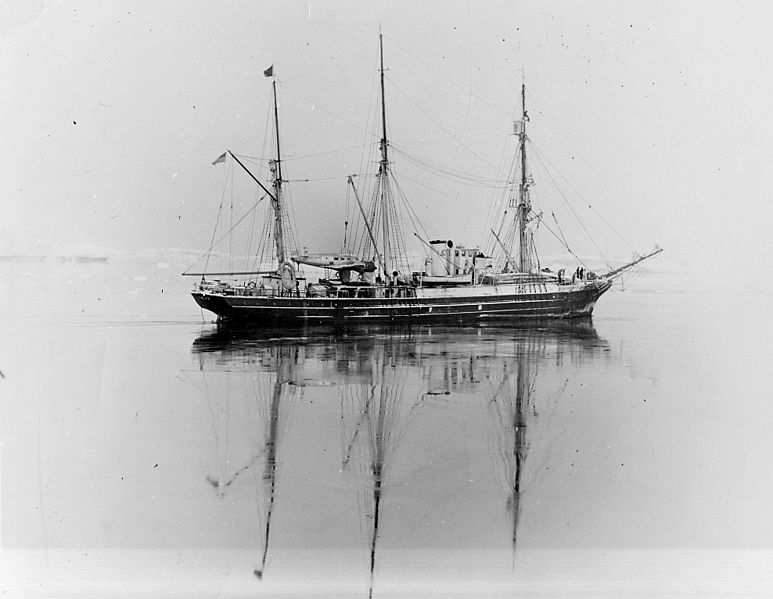Difference between revisions of "Template:POTD protected"
Westarctica (talk | contribs) |
Westarctica (talk | contribs) |
||
| Line 1: | Line 1: | ||
{| role="presentation" style="margin:0 3px 3px; width:100%; text-align:left; background-color:transparent; border-collapse: collapse; " | {| role="presentation" style="margin:0 3px 3px; width:100%; text-align:left; background-color:transparent; border-collapse: collapse; " | ||
|style="padding:0 0.9em 0 0;" | [[File: | |style="padding:0 0.9em 0 0;" | [[File:USS-Bear.jpg|300px|thumb]] | ||
|style="padding:0 6px 0 0"| | |style="padding:0 6px 0 0"| | ||
The '''[[ | The '''[[USS Bear|USS ''Bear'']]''' was a dual steam-powered and sailing ship built with six-inch (15.2 cm)-thick sides which had a long life in various cold-water and [[ice]]-filled environs. She was a forerunner of modern [[icebreaker]]s and had an exceptionally diverse service life. According to the United States Coast Guard official website, ''Bear'' is described as "probably the most famous ship in the history of the Coast Guard." | ||
Built in Scotland in 1874 as a steamer for sealing, she was owned and operated out of Newfoundland for ten years. In the mid-1880s, she took part in the search for the Greely Expedition. Her services also included the second expedition of Admiral [[Richard E. Byrd]] to [[Antarctica]], and again to the southernmost continent in 1941 to evacuate Americans at the beginning of World War II. She later served in patrol duty off the coast of Greenland for the [[United States Navy]]. | |||
<p><small>Photographer: Ingo Wölbern</small></p> | <p><small>Photographer: Ingo Wölbern</small></p> | ||
[[:Category:Images|'''(More Images)''']] | [[:Category:Images|'''(More Images)''']] | ||
<div class="potd-recent" style="text-align:right;"> | <div class="potd-recent" style="text-align:right;"> | ||
Revision as of 18:57, 10 March 2024
|
The USS Bear was a dual steam-powered and sailing ship built with six-inch (15.2 cm)-thick sides which had a long life in various cold-water and ice-filled environs. She was a forerunner of modern icebreakers and had an exceptionally diverse service life. According to the United States Coast Guard official website, Bear is described as "probably the most famous ship in the history of the Coast Guard." Built in Scotland in 1874 as a steamer for sealing, she was owned and operated out of Newfoundland for ten years. In the mid-1880s, she took part in the search for the Greely Expedition. Her services also included the second expedition of Admiral Richard E. Byrd to Antarctica, and again to the southernmost continent in 1941 to evacuate Americans at the beginning of World War II. She later served in patrol duty off the coast of Greenland for the United States Navy. Photographer: Ingo Wölbern |
